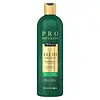What's inside
What's inside
 Key Ingredients
Key Ingredients

 Benefits
Benefits

 Concerns
Concerns

 Ingredients Side-by-side
Ingredients Side-by-side

Water
Skin ConditioningSodium Laureth Sulfate
CleansingCocamide Mea
EmulsifyingSodium Isostearoyl Lactylate
EmulsifyingGlycol Distearate
EmollientGlycerin
HumectantCocamidopropyl Betaine
CleansingSodium Chloride
MaskingPhenoxyethanol
PreservativeDimethicone
EmollientHydroxypropyl Methylcellulose
Emulsion StabilisingCocodimonium Hydroxypropyl Hydrolyzed Wheat Protein
CleansingParfum
MaskingPolyquaternium-7
Ethylhexylglycerin
Skin ConditioningGuar Hydroxypropyltrimonium Chloride
Skin ConditioningPanthenol
Skin ConditioningTocopherol
AntioxidantCitric Acid
BufferingSodium Hydroxide
BufferingCI 42090
Cosmetic ColorantWater, Sodium Laureth Sulfate, Cocamide Mea, Sodium Isostearoyl Lactylate, Glycol Distearate, Glycerin, Cocamidopropyl Betaine, Sodium Chloride, Phenoxyethanol, Dimethicone, Hydroxypropyl Methylcellulose, Cocodimonium Hydroxypropyl Hydrolyzed Wheat Protein, Parfum, Polyquaternium-7, Ethylhexylglycerin, Guar Hydroxypropyltrimonium Chloride, Panthenol, Tocopherol, Citric Acid, Sodium Hydroxide, CI 42090
Water
Skin ConditioningCocamidopropyl Betaine
CleansingSodium Lauroyl Isethionate
CleansingSodium Chloride
MaskingSodium Methyl Lauroyl Taurate
CleansingSodium Benzoate
MaskingNiacinamide
SmoothingCocos Nucifera Oil
MaskingHydrolyzed Wheat Protein
Skin ConditioningParfum
MaskingLauric Acid
CleansingGuar Hydroxypropyltrimonium Chloride
Skin ConditioningSodium Isethionate
CleansingCitric Acid
BufferingStearamidopropyl Dimethylamine
EmulsifyingPotassium Sorbate
PreservativeSodium Methyltaurate
Skin ConditioningPPG-9
Skin ConditioningAlpha-Isomethyl Ionone
PerfumingCitronellol
PerfumingHexyl Cinnamal
PerfumingLimonene
PerfumingLinalool
PerfumingWater, Cocamidopropyl Betaine, Sodium Lauroyl Isethionate, Sodium Chloride, Sodium Methyl Lauroyl Taurate, Sodium Benzoate, Niacinamide, Cocos Nucifera Oil, Hydrolyzed Wheat Protein, Parfum, Lauric Acid, Guar Hydroxypropyltrimonium Chloride, Sodium Isethionate, Citric Acid, Stearamidopropyl Dimethylamine, Potassium Sorbate, Sodium Methyltaurate, PPG-9, Alpha-Isomethyl Ionone, Citronellol, Hexyl Cinnamal, Limonene, Linalool
Ingredients Explained
These ingredients are found in both products.
Ingredients higher up in an ingredient list are typically present in a larger amount.
Citric Acid is an alpha hydroxy acid (AHA) naturally found in citrus fruits like oranges, lemons, and limes.
Like other AHAs, citric acid can exfoliate skin by breaking down the bonds that hold dead skin cells together. This helps reveal smoother and brighter skin underneath.
However, this exfoliating effect only happens at high concentrations (20%) which can be hard to find in cosmetic products.
Due to this, citric acid is usually included in small amounts as a pH adjuster. This helps keep products slightly more acidic and compatible with skin's natural pH.
In skincare formulas, citric acid can:
While it can provide some skin benefits, research shows lactic acid and glycolic acid are generally more effective and less irritating exfoliants.
Most citric acid used in skincare today is made by fermenting sugars (usually from molasses). This synthetic version is identical to the natural citrus form but easier to stabilize and use in formulations.
Read more about some other popular AHA's here:
Learn more about Citric AcidCocamidopropyl Betaine is a fatty acid created by mixing similar compounds in coconut oil and dimethylaminopropylamine, a compound with two amino groups.
This ingredient is a surfactant and cleanser. It helps gather the dirt, pollutants, and other impurities in your skin to be washed away. It also helps thicken a product and make the texture more creamy.
Being created from coconut oil means Cocamidopropyl Betaine is hydrating for the skin.
While Cocamidopropyl Betaine was believed to be an allergen, a study from 2012 disproved this. It found two compounds in unpure Cocamidopropyl Betaine to be the irritants: aminoamide and 3-dimethylaminopropylamine. High-grade and pure Cocamidopropyl Betaine did not induce allergic reactions during this study.
Learn more about Cocamidopropyl BetaineThis ingredient is derived from guar gum.
It is a conditioning ingredient, meaning it helps soften skin and hair.
Parfum is a catch-all term for an ingredient or more that is used to give a scent to products.
Also called "fragrance", this ingredient can be a blend of hundreds of chemicals or plant oils. This means every product with "fragrance" or "parfum" in the ingredients list is a different mixture.
For instance, Habanolide is a proprietary trade name for a specific aroma chemical. When used as a fragrance ingredient in cosmetics, most aroma chemicals fall under the broad labeling category of “FRAGRANCE” or “PARFUM” according to EU and US regulations.
The term 'parfum' or 'fragrance' is not regulated in many countries. In many cases, it is up to the brand to define this term.
For instance, many brands choose to label themselves as "fragrance-free" because they are not using synthetic fragrances. However, their products may still contain ingredients such as essential oils that are considered a fragrance by INCI standards.
One example is Calendula flower extract. Calendula is an essential oil that still imparts a scent or 'fragrance'.
Depending on the blend, the ingredients in the mixture can cause allergies and sensitivities on the skin. Some ingredients that are known EU allergens include linalool and citronellol.
Parfum can also be used to mask or cover an unpleasant scent.
The bottom line is: not all fragrances/parfum/ingredients are created equally. If you are worried about fragrances, we recommend taking a closer look at an ingredient. And of course, we always recommend speaking with a professional.
Learn more about ParfumChances are, you eat sodium chloride every day. Sodium Chloride is also known as table salt.
This ingredient has many purposes in skincare: thickener, emulsifier, and exfoliator.
You'll most likely find this ingredient in cleansers where it is used to create a gel-like texture. As an emulsifier, it also prevents ingredients from separating.
There is much debate on whether this ingredient is comedogenic. The short answer - comedogenic ratings don't tell the whole story. Learn more about comegodenic ratings here.
The concensus about this ingredient causing acne seems to be divided. Research is needed to understand if this ingredient does cause acne.
Scrubs may use salt as the primary exfoliating ingredient.
Learn more about Sodium ChlorideWater. It's the most common cosmetic ingredient of all. You'll usually see it at the top of ingredient lists, meaning that it makes up the largest part of the product.
So why is it so popular? Water most often acts as a solvent - this means that it helps dissolve other ingredients into the formulation.
You'll also recognize water as that liquid we all need to stay alive. If you see this, drink a glass of water. Stay hydrated!
Learn more about Water